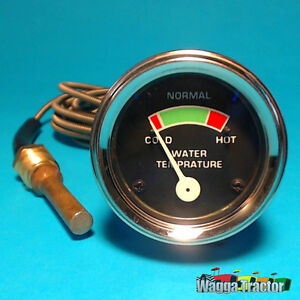Webley1991
Well-Known Member
- Posts
- 2,557
- Location
- London
What is the normal operating temperature of the 2.25 Diesel series engine?
Last weekend I got stuck in a traffic jam during the hot weather. The dashboard gauge rose to just below the bottom of the hot section. I pulled over and measured the engine temperatures with a non-contact thermometer. I got a reading of around 90c (194f) from the block and 85c (185f) for the head. The cooling system is standard apart from having a 4 blade white plastic fan from a 2.5NA engine fitted.
I took it out again today and got readings of around 80c for the block and head. The gauge was in the upper "N" range. A few minutes later the needle dropped again slightly, which I assume was due to the thermostat opening.
I am aware that the standard gauges are not very reliable. I also have some digital gauges with the probes attached to the top and bottom of the radiator. I have never got round to fitting an aftermarket gauge with a sender in place of the original.
I have not driven many times before in weather as warm as last weekend. The engine was completely rebuilt when installed, so the cooling system should be clear of sediment or blockages.
Are those temperature ranges normal?
Thanks for any replies.
Last weekend I got stuck in a traffic jam during the hot weather. The dashboard gauge rose to just below the bottom of the hot section. I pulled over and measured the engine temperatures with a non-contact thermometer. I got a reading of around 90c (194f) from the block and 85c (185f) for the head. The cooling system is standard apart from having a 4 blade white plastic fan from a 2.5NA engine fitted.
I took it out again today and got readings of around 80c for the block and head. The gauge was in the upper "N" range. A few minutes later the needle dropped again slightly, which I assume was due to the thermostat opening.
I am aware that the standard gauges are not very reliable. I also have some digital gauges with the probes attached to the top and bottom of the radiator. I have never got round to fitting an aftermarket gauge with a sender in place of the original.
I have not driven many times before in weather as warm as last weekend. The engine was completely rebuilt when installed, so the cooling system should be clear of sediment or blockages.
Are those temperature ranges normal?
Thanks for any replies.


